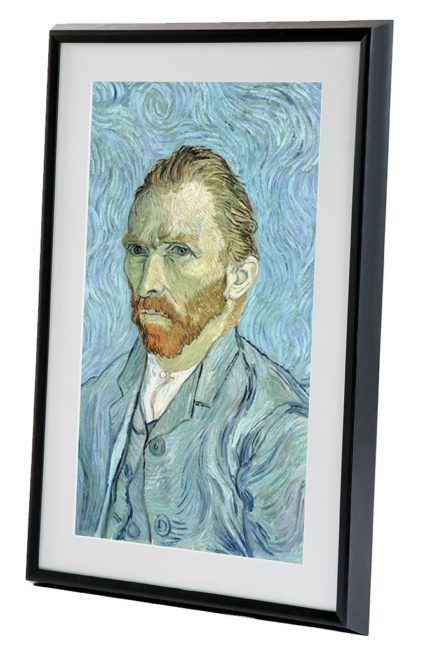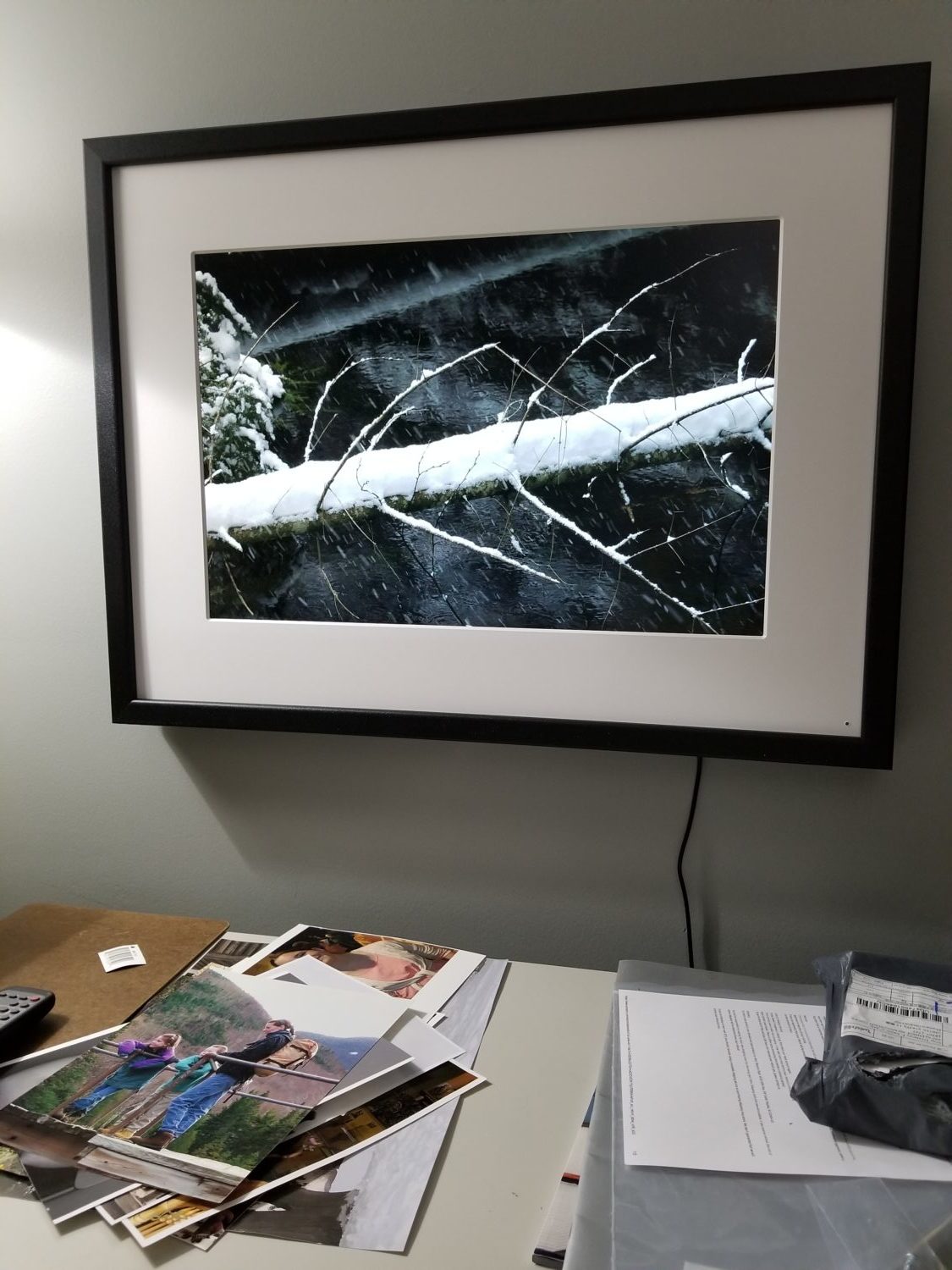As a photographer, it is natural to want to display your work for others to see. Obviously, with social media, you can offer essentially the world (or, at least your followers), your latest efforts. But what about your guests at home? Printing and framing, are expensive and for me, impractical for the number of images I would like to display throughout the year.
Now you can certainly show work on a computer monitor, but this isn’t something that house guests think to seek out. Coaxing someone to review your work on your computer always seem to me to be akin to breaking out the slide projector after dinner. It makes most people cringe.
So I was on the website Luminous Landscape recently. They posted a review, of two fairly novel products that looked really interesting to me, especially as I re-decorate, my home office workspace. As it turns out, one can now purchase large digital display devices which are very appropriate for the wall display of photography.
Now digital picture frames have been around for a long time. I have a 5 x 7 version sitting on the table in my den, which is pleasant for a slideshow of snapshots. It is obviously too small and has insufficient resolution for serious work. But there are apparently several manufacturers making display-worthy larger digital frames that offer a convenient and easy way to show one’s work (and other artistic works) in a gallery style.
The most aggressively marketed of these is the Meural. This is a 27 inch, 1920 x 1080 resolution flat panel screen mounted to look like a matted framed object. It is actually marketed along with a subscription service that allows you to display a huge variety of artworks licensed by the service. It can be controlled from your computer or your mobile device. It can also be loaded with your own images. It has a unique motion sensor that allows you to swipe in front of the screen to change the artwork.
I, however, chose another product: the Memento Smart Frame. It too looks like a matted frame, but for me, it has several advantages over the Meural product. First, it has significantly higher resolution at 3240 x 2160 which also gives it a 3:2 aspect ratio rather than the 16:9 aspect ratio of the Meural. It comes in two sizes: 25 and 35 inches, sold at US $599 and $899 respectively.
On both the Meural and the Memento products, it is possible to display other aspect ratios with the rest of the screen masked. I find the images look much better if they can be displayed full screen. Given this, most images work better at the 3:2 format (the native format of most sensors) than in the wider ratio.
The Memento Smart Frame is mounted to a wall using a specially designed bracket. The 35-inch frame is capable of being mounted both horizontally and vertically. I have the 25 inch which is only designed to be mounted horizontally. It is connected to an electrical outlet by a thin power wire which is relatively easy to hide. You can also buy an optional flat power wire that can be taped to the wall and painted over.
The frame is activated by downloading an app to a mobile device, or your computer. You can then connect the frame to your WiFi. The app allows you to create different folders with images for display. It will store up to 3000 images as jpgs.
You can decide to display 1 image or a variety of images which will display whatever time interval you select. I will typically allow about 5 minutes between images so they can be appreciated, but a slideshow-like presentation would also be possible.
It also has the capability of having images uploaded remotely. Thus it can be a sort of upscale version of those smaller digital frames marketed to seniors so their offspring can upload images of the grandchildren.
Another appreciated feature is the timer and light sensor which allows the frame to be off for prescheduled periods (like when I’m at work). The frame can also be set to go off at night, and/or when there is no ambient light. The frame also adjusts to the light level, and its color signature, contrast, and brightness can be adjusted in the app.
So how do images look? From my point of view very nice indeed. I keep most of the controls near neutral, but it is important to adjust the brightness of the display so that the impression of backlighting is minimized. Once this is done, images are not immediately distinguishable from an actual framed print. Colors are vivid, and detail is excellent. When displaying black-and-white in particular, the graduations are very pleasing, and blacks are deep.
I am so enjoying the Memento frame, I am thinking about buying a second one, perhaps a 35-inch version so that I can display vertically oriented images. I also think of their other potential uses.
For instance, my last gallery show cost upwards of $2200 just for framing roughly 30 works. In time when the price of these devices comes down a bit, I can imagine organizing a gallery show using four or five of these frames, each displaying perhaps 5 images sequentially. Over the long run, this would save a lot of money and trouble (bubble wrapping and transporting framed prints is a nuisance). As opposed to the many hours it takes to create a standard display of prints, setting up this sort of show would be a breeze. I would only have to print the images I sell.
The Memento Smart Frame is a wonderful example of how technology is changing the nature of photography, and the display of artworks. And, it will only get better.













